Athletes & COVID-19
Athletes with COVID-19 Policy:
If your child tests positive for COVID-19 and is an athlete (including but not limited to school sports, club sports, or other competitive/exertional activities like dance, gymnastics, marching band, etc.):
He or she will need to follow-up for an office visit once it has been at least 10 days from the positive test result and your child has been symptom-free without fever-reducing medications for at least 24 hours in order to have a physical exam and cardiac clearance prior to resuming their activity.
COVID-19 has been found to lead to myocarditis which could lead to sudden death during heavy exercise if not cared for properly. Please do not allow your child to exercise or resume activities prior to being cleared. If needed, you will be provided these recommendations in writing in order to inform your coach and team.
As youth sports start back up in some communities, remember these steps to help keep players, coaches and families safer during the COVID-19 pandemic:
Before the sports season starts:
☐ Check to make sure sports and recreation activities are approved by your local and state government.
☐ Understand the new safety rules and expectations for participation during COVID-19.
☐ Each child should have their own cloth face covering, hand sanitizer, towel, water bottle, and tissues labeled with their names.
☐ All youth athletes should have an up-to-date sports physical before participating.
Prior to practice or games:
☐ Athletes should stay home from practice or game if they’re feeling sick or have a fever.
☐ Wash hands before arriving, or use hand sanitizer if soap and water aren’t available.
☐ Bring labeled (with name) personal sports equipment, water bottle, towel, tissues, hand sanitizer, and cloth face covering.
☐ Stay in the car or assigned school location until the coach is ready to start practice
☐ Avoid gathering in groups before practice, maintain social distance and wear a cloth face mask.
During sports practice or games:
☐ Whenever possible, athletes maintain 6-8 feet of physical distance during drills and conditioning.
☐ When possible and safe, athletes should each wear cloth face covering–especially on the sideline, in dugouts, and during team chats.
☐ Avoid these behaviors:
– Huddles, high-fives, fist bumps, handshakes, etc.
– Sharing food or drink with teammates.
– Cheering, chanting, or singing when closer than 6-8 feet from others.
– Spitting or blowing nose without a tissue.
☐ Store personal equipment 6-8 feet away from other teammates’ equipment.
☐ Minimize sharing sports equipment when possible.
☐ Sanitize hands before and after using shared equipment such as balls, bats and sticks.
☐ Tell a coach if you are not feeling well and leave practice or game with parent or caregiver.
After sports practice or games:
☐ Sanitize or wash hands.
☐ Wash cloth face coverings, towel and practices clothes or uniform.
☐ Clean personal sports equipment and water bottle.
Remember
Talk with your child’s pediatrician if you have any questions about youth sports participation safety based on COVID-19 in your community and your child’s health.
Source: American Academy of Pediatrics
Kids and Masks: Why Cloth Face Coverings are Needed in Youth Sports During COVID-19
Part of being on a team is defending and protecting your teammates. One of the best ways that athletes can do this is to wear a mask or cloth face covering to reduce the risk of spreading COVID-19 through respiratory droplets. It is important that families of young athletes understand their risk and know how to protect themselves.
Cloth face coverings help young athletes protect their teammates and themselves. They also help protect the sports season. Whenever safe and possible, athletes should wear a cloth face covering. Exceptions include when they are actively exercising.
Here’s a rundown on what you need to know about kids and masks during sports
Athletes should wear a cloth face covering over the nose and mouth when:
– On the sideline bench or in dugouts.
– Participating in team chats.
– Going to and from the field, court, gym, pool, etc.
Cloth face coverings are particularly important when:
– It is not possible to stay at least 6 feet apart.
– Indoors.
Face coverings should never be worn when performing:
– Water sports.
– Sports where coverings could pose an injury risk due to getting caught on equipment or accidentally covering eyes.
Make masks a habit
Wearing a cloth face covering may feel different at first. Here are some ways you can help your kids get used to them:
Find a cloth face covering that your child can put on and take off themselves. Make sure it covers their nose and mouth and is comfortable for them to wear.
Have your child practice wearing it while doing drills or playing their sport before the season starts.
Have a special place to store the cloth face covering. For example, your child might keep it in the same spot in their sports bag when they are not wearing it.
Keep it clean
– Just like you should sanitize sports equipment before and after each use, wash cloth face coverings daily in hot water.
– Do not reuse them until they have been cleaned.
Set a good example
Coaches and spectators are also encouraged to protect themselves and others by wearing a cloth face covering. By doing this, they are also setting a good example for young athletes. Coaches should wear cloth face coverings when interacting with athletes. Spectators should wear cloth face coverings, especially when indoors or when physical distance of 6 feet cannot be maintained.
Source: American Academy of Pediatrics
Youth Sports & COVID-19: Understanding the Risks
The sudden loss of sports during COVID-19 shutdowns was hard for many young athletes and their families. Understandably families and young athletes are looking forward to returning to sports as soon as they can but are rightfully concerned about safety during this pandemic.
As sports resume in your area, it will be important for you to understand the risks and make choices that take into account what is going on in your community and what is best for your family. To help you make an informed decision about whether your child should return to playing a sport, we have broken down some key risk factors associated with sports participation.
What type of sport is it?
Sports that allow for individual participation and physical distancing, like golf or cycling, are going to be less risky than sports that involve a lot of close contact like basketball or wrestling.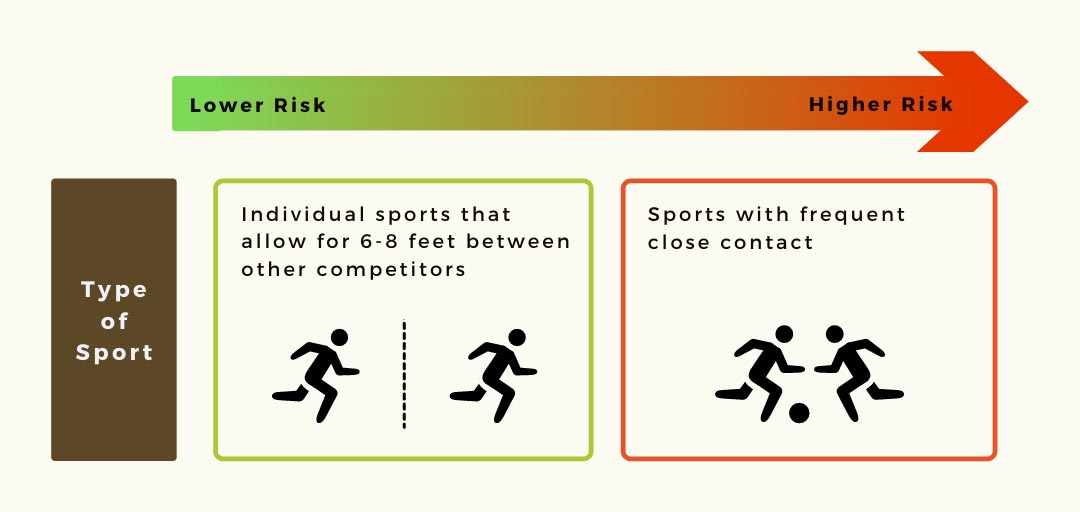
Do players share equipment?
Sports without shared equipment, like cross country, will likely be less risky than sports such as football that are played with a shared ball.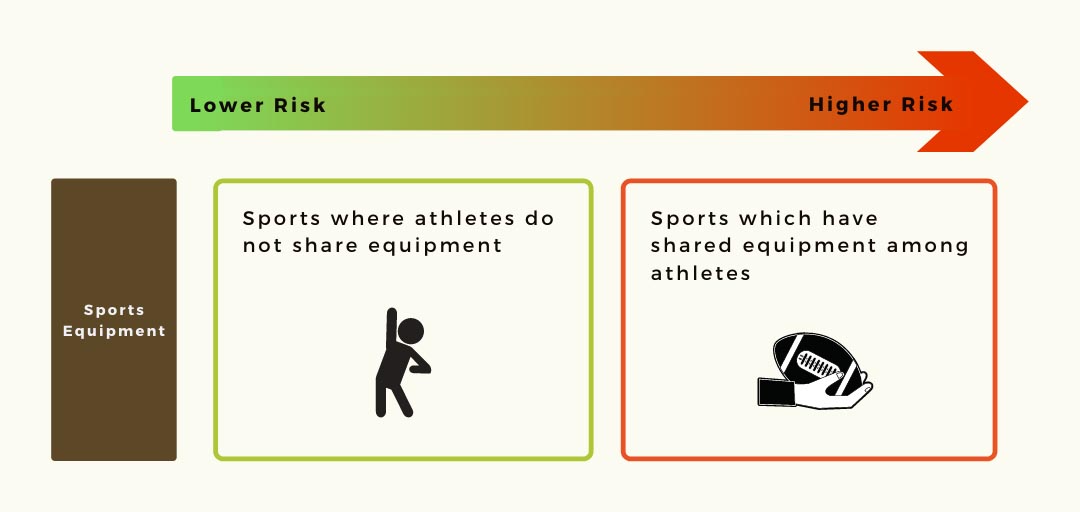
How long are athletes in contact with each other?
Sports with limited exposure to other players may be a safer option. A sprint in a track race, for example, may be less risky than sports that put someone in close contact with another player for an extended period of time, like an entire half of a game.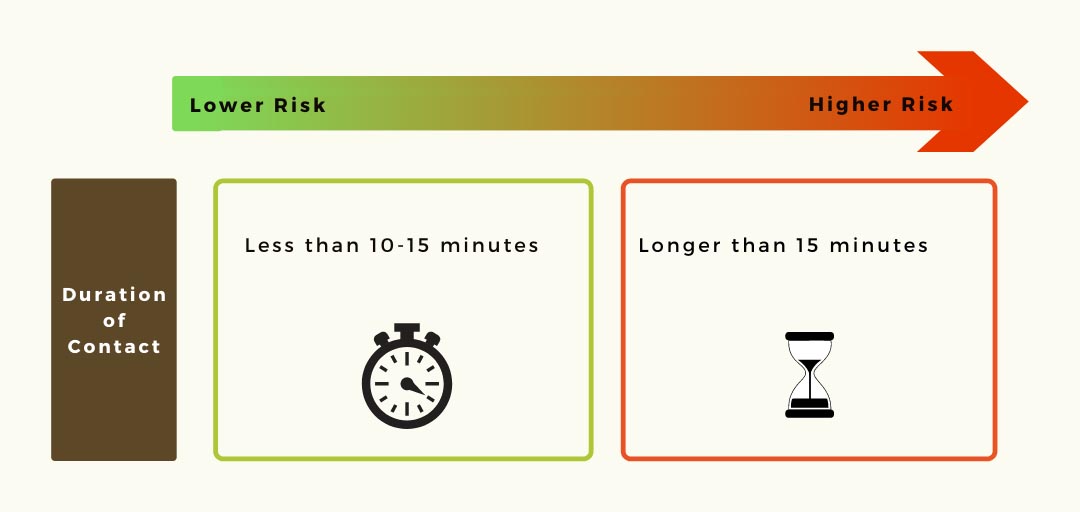
Is it an inside or outside sport?
Where athletes train, practice and compete also impacts risk. Data suggests that COVID-19 is more likely to spread in closed indoor spaces with poor ventilation. So indoor sports will likely be more risky. Prioritize outdoor venues for sports whenever possible.
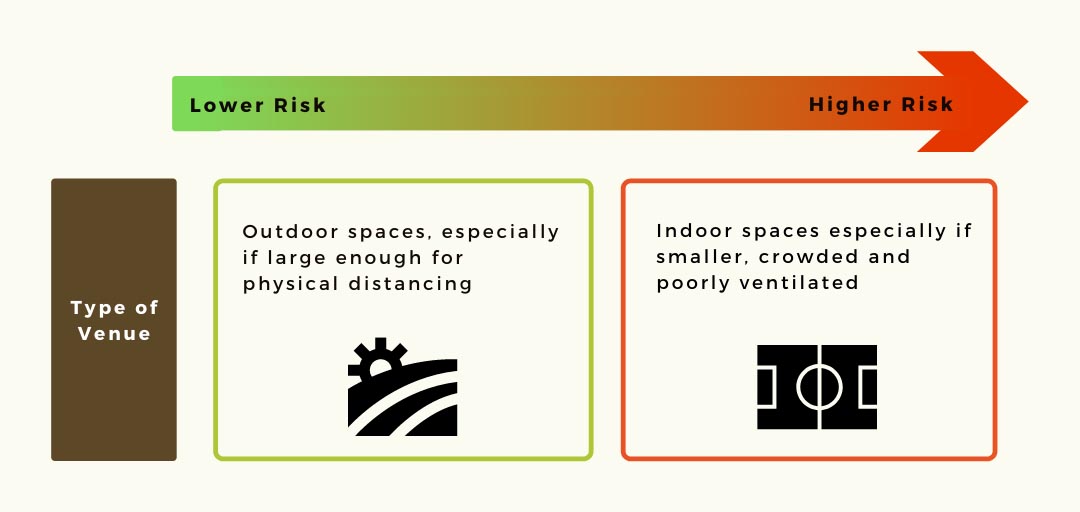
How many players are on the team?
The more people someone interacts with, the greater the chance of COVID-19 exposure. So small teams or practice cohorts that stay together, rather than mixing with other teams or coaches, will be a safer option. This will also make it easier to contact individuals if there is an exposure to COVID-19.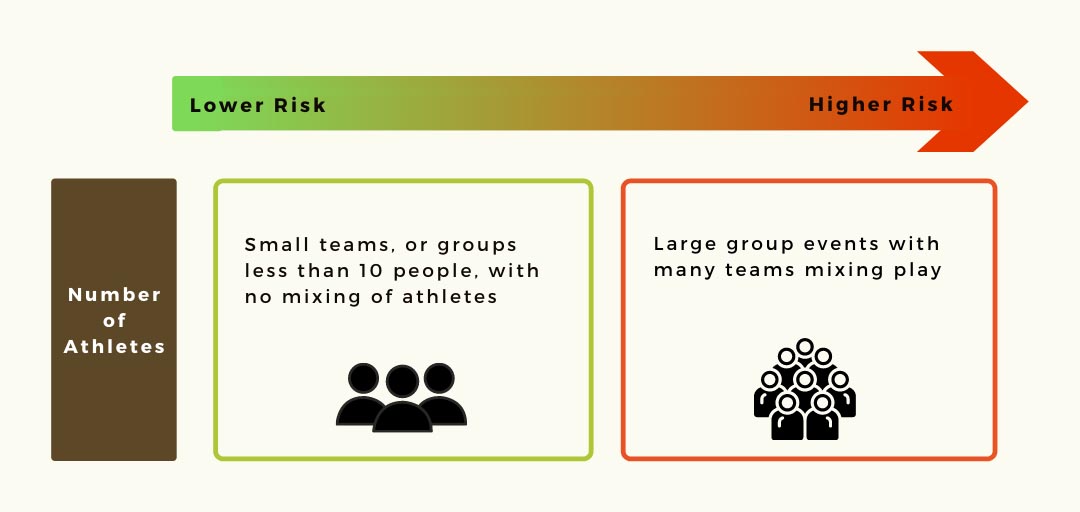
Do the teams travel?
Staying within your community will be safer than participating on travel teams. Traveling to an area with more COVID-19 cases could increase the chance of transmission and spread. Travel sports also include intermixing of players, so athletes are generally exposed to more people.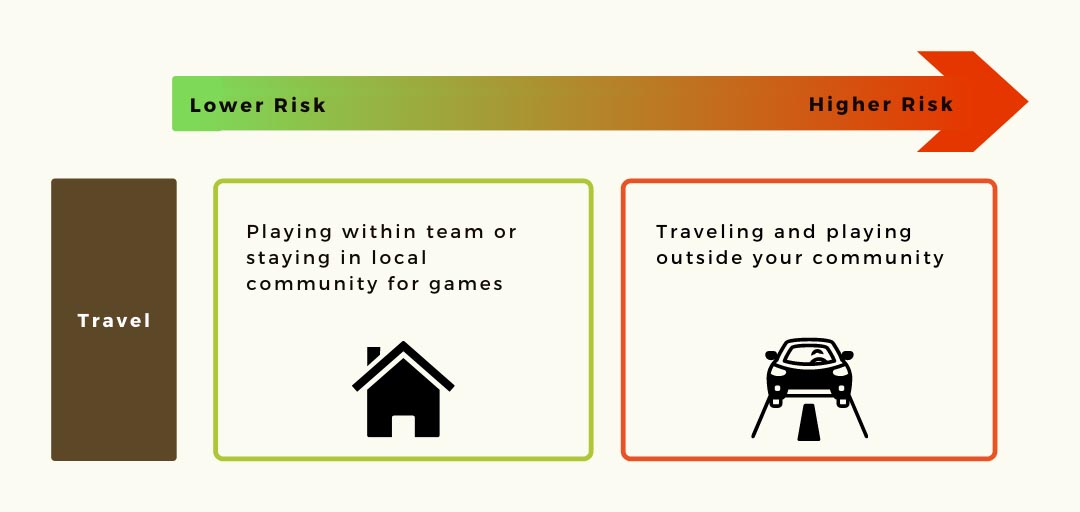
Are masks being worn?
Wearing cloth face coverings is an effective way to reduce the spread of COVID-19 through respiratory droplets. At sporting events, it is common for coaches, players and spectators to raise their voices while shouting, singing or chanting. The more people who wear masks, the less likely there will be transmission of COVID-19. If nobody is wearing a cloth face covering, the risk of spread will be much higher. Spectators should wear cloth face coverings, especially at events held indoors or where it is hard to keep a safe physical distance from others. Coaches, athletes and officials should wear cloth face coverings whenever safe and possible.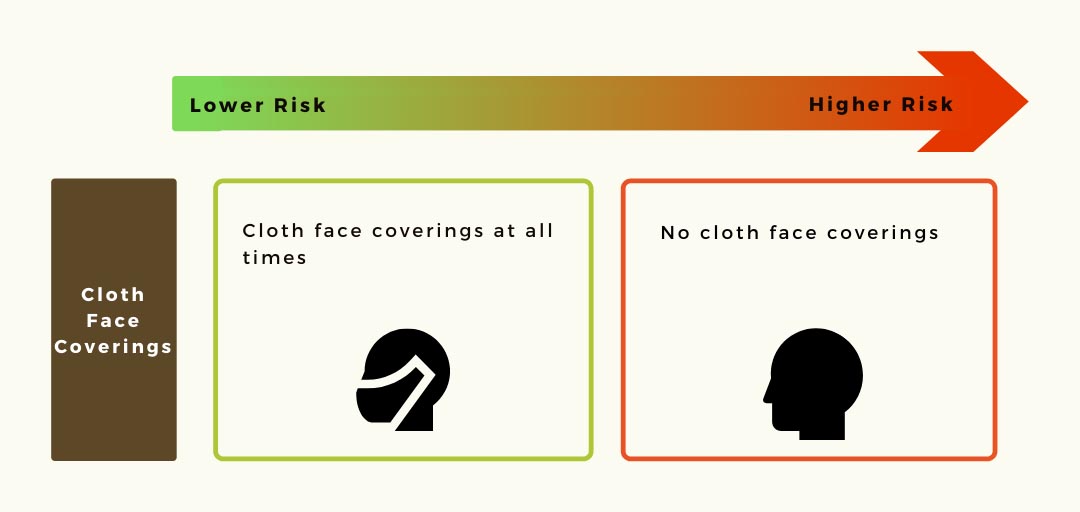
Is everyone following COVID-19 safety procedures?
In order to create safer environments for everyone, new safety procedures will be put in place for practices and games. Parents, athletes, coaches and staff should work together to help keep everyone healthy and safe by following them! When people do not follow these precautions, it can put the whole team at risk. So remember to be a good teammate and fan and follow the new safety rules.
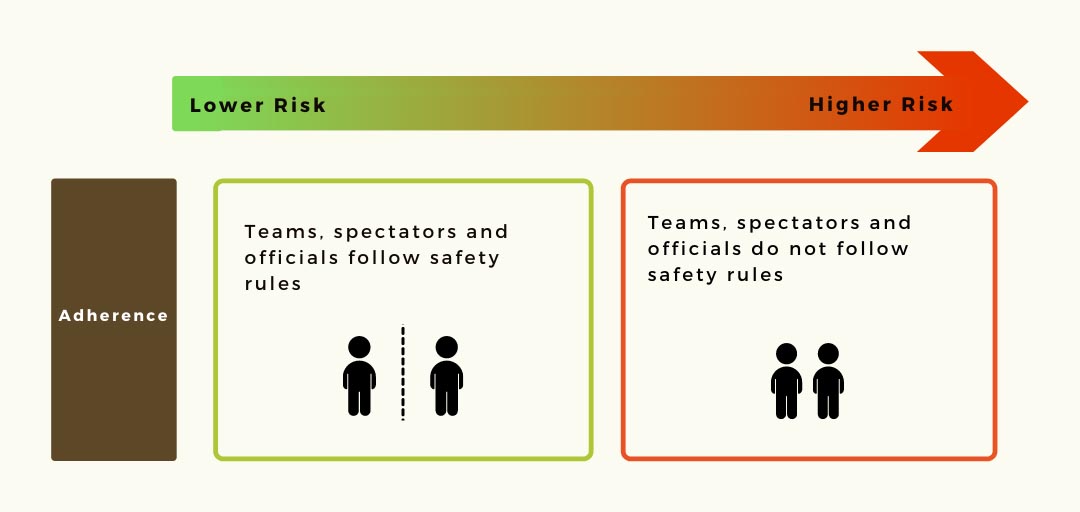
Source: American Academy of Pediatrics
The American Academy of Pediatrics, American Medical Society for Sports Medicine and National Athletic Trainers’ Association teamed up to bring you “Play Informed,” a video series on youth sports during the pandemic:
Watch Session 1: Understanding the Risks and Benefits of Sports Participation during the Pandemic
Watch Session 2: Safety Precautions for You and Your Team
Watch Session 3: Navigating Sports During COVID-19 for Elite Athletes
Talk with your pediatrician if you have questions about the risks and benefits of sports participation during the COVID-19 pandemic for your child, and how to help keep everyone safe.

